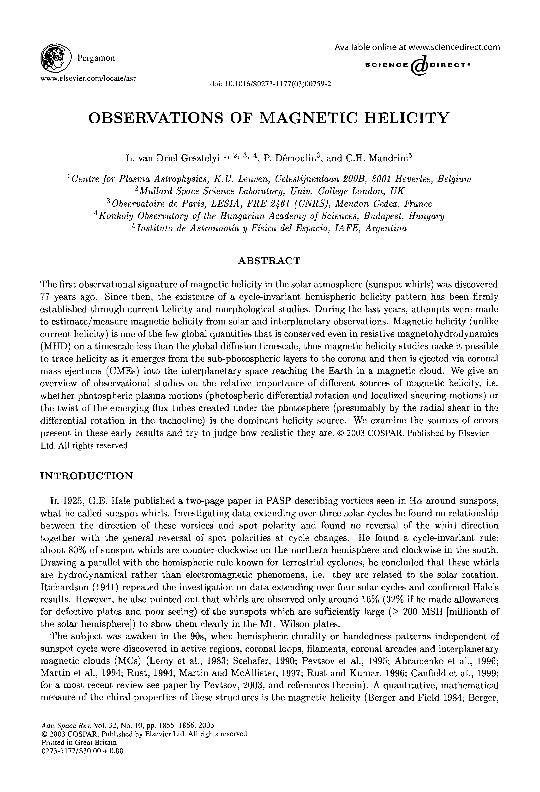Artículo
Observations of magnetic helicity
Fecha de publicación:
12/2003
Editorial:
Elsevier
Revista:
Advances in Space Research
ISSN:
0273-1177
Idioma:
Inglés
Tipo de recurso:
Artículo publicado
Clasificación temática:
Resumen
The first observational signature of magnetic helicity in the solar atmosphere (sunspot whirls) was discovered 77 years ago. Since then, the existence of a cycle-invariant hemispheric helicity pattern has been firmly established through current helicity and morphological studies. During the last years, attempts were made
to estimate/measure magnetic helicity from solar and interplanetary observations. Magnetic helicity (unlike current helicity) is one of the few global quantities that is conserved even in resistive magnetohydrodynamics (MHD) on a timescale less than the global diffusion timescale, thus magnetic helicity studies make it possible
to trace helicity as it emerges from the sub-photospheric layers to the corona and then is ejected via coronal mass ejections (CMES) into the interplanetary space reaching the Earth in a magnetic cloud. We give an overview of observational studies on the relative importance of different sources of magnetic helicity, i.e.
whether photospheric plasma motions (photospheric differential rotation and localized shearing motions) or the twist of the emerging flux tubes created under the photosphere (presumably by the radial shear in the differential rotation in the tachocline) is the dominant helicity source. We examine the sources of errors
present in these early results and try to judge how realistic they are.
Palabras clave:
Magnetic Helicity
Archivos asociados
Licencia
Identificadores
Colecciones
Articulos(IAFE)
Articulos de INST.DE ASTRONOMIA Y FISICA DEL ESPACIO(I)
Articulos de INST.DE ASTRONOMIA Y FISICA DEL ESPACIO(I)
Citación
van Driel Gesztelyi, Lidia; Démoulin, Pascal; Mandrini, Cristina Hemilse; Observations of magnetic helicity; Elsevier; Advances in Space Research; 32; 10; 12-2003; 1855-1866
Compartir
Altmétricas




